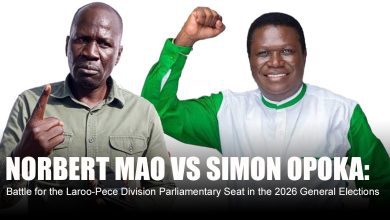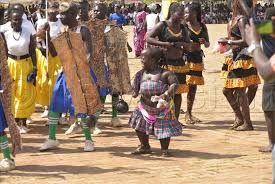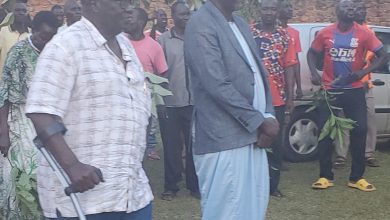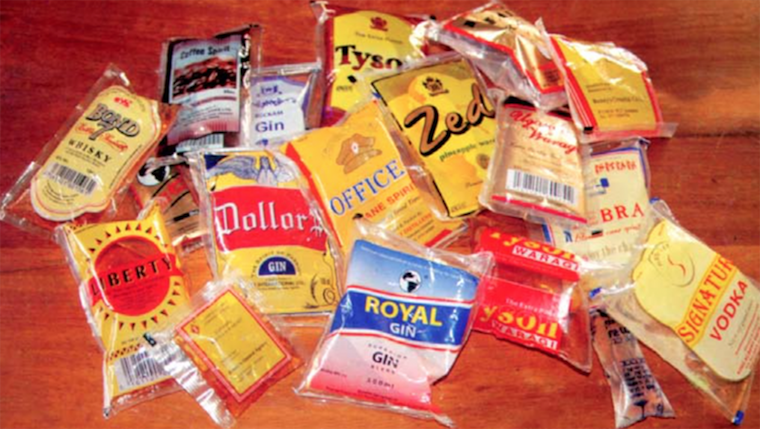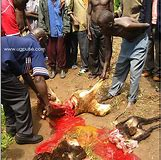
Global Politics
UGANDA: NO IMPINITY IN AFRICAN ETHNICITY
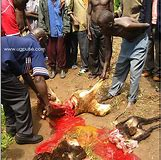
African traditions are rooted to protect against violence crimes, any clan member of society are protected by traditional norms to the extent that each individual person is being gleeful watch against the “dos and don’ts.”
GULU-UGANDA: Mark Okwarmio former Educationist is a living testimony of witness how the African society norms are so protective to guard against crime perpetrators to the extent that the whole communities would face the culprits clan in order to reprimand such misdeed.
Okwarmio says in 1960’s there was an incident that happened at Awali-Wang Lobo, Lamala parish, the then Lalogi Sub-County, and now Odek Sub-County. The son of Orwa decided to fence their areas by putting barb wires around their land.
While the man was busy fencing his land, he started to dig holes, planting poles around the homestead; it was business as usual to the neighborhood.
Thus, one day Orwa’s son fenced their homestead and also blocked the path which community used to go and fetch water. In Acholi culture no one is supposed to temper with the public utilities like well, or close the public roads.
It transpired that one of the women in the village was coming back from the garden, where she went to fetch some water from the well. It happened that the path leading to the well passes through Orwar homestead was block. When the said Woman discovered the path leading to the well was fenced. She made ululation to alert the other road users.
That alarm of ululation was picked from one village to the other, and the alarm went as far as reaching Bobi Sub-County 70km to the West of Awalai village, Awere areas. While the same message of ululation was echoed to the dismay upfront to as far as Kilak Sub- County 70km the current Pader District headquarter.
There were numerous warriors Tenth of Thousands in numbers who started coming from all directions to Awali-wang Lobo, the multitude descended to Orwa homestead like swamps of locus. Those people although they were armed with matches, spears, bow and arrows. But they were not violent.
“Their mission was to find the root courses of the alarm, was there an attack by foreign tribe at Awali-wang Lobo, or the beast have invade the community in that areas, and that is why the alarm was made.” Okwarmio narrates.
The Orwa family had gone long time ago, the Woman explained that when she was going to the well, she was verbal attacked by Orwa family, and that why she has to made alarm.
The convoy avenges their anger on Orwa people by destroying all property, those who could go for Chicken went for it, and some went for Livestock. But the big casualty was livestock that happened, the all Karl dismissing “Cows was slaughter by enraged people who responded”. Eventually the barbwire was cut from line to line till no stand was left.
Orwa family migrated to Lira District for about many years until when the dust were settle, later they return back to Awali-wang Lobo.
SCORE OF GULU TOWN PEOPLE ARREST TWO WEEK AGO FOR REGENG KILLING
Two weeks ago, there was a similar incident that happened in Gulu outskirt, at Obiya West the Local Council I of the area went for revenge killing in Bwungatira Sub- County, in Gulu District.
Despite the fact that he was a LCI of the areas, and one of the government arms in Gulu town, the councilor still has the audacity to carry on a raid burnt down 52 grass thatched huts in Awor-Nyim village in Bwungatira Sub- County, Gulu District to avenge the purported killing of his Nephew, who was reportedly killed during the fight with his friend.
Okello John which is not his real name and Okot Peter went for socializing with his friends in the Evening, but the two loved birds friends were eyeing one girl, and struggled to win the heart of the beautiful daughter of Labongo resulted to open fight.
Okello was beaten properly by Okot Peter, later on; Okello went missing and disappeared in the thin air like a young Elephant, Okot fearing for his life, he thought that the dreaded Council Chairman LC I would arrest him as its was rumor that the man crump to died.
However, someone tips Okello’s Uncle that he was killed. The same information reaches Okello’s mother who is a sister to Obiya West Chairman about the murder of her son who was no where to be seen.
This prompted the Chairman to organize his clan and went for raid in Awor-Nyim they looted livestock in hundreds.Little longer, after a week Okello, who was presumed dead, re-surface alive. The information trickle back to Awor-Nyim where 52 huts were burnt down, that Okello was not death as it was reported.
They people of Awor-Nyim reported the case of arson to Gulu Central Police Station, and later on, dozens of suspect were arrested including Chairman LC I who led the attack.
Awere tribal aborted raid
A month ago similar incident of raid was reported in Awere as it was triggered by rumors that someone from Bolo was killed.
However, Bolo clan went ahead to invade Lamala and Kal-odoko taya in Awere just because they believe that their son was killed and to them there is no impunity after death of the loved one; the community must also punish the wrong doers.
John Otuke of Bolo Langole village got information that his son was killed in Awere market, and he was hidden in the bush at Lamala Ajan village, “He was put to rest at the bank of Anyade river stream.”
Otuke and his clan’s members went at dawn and begun to comb the bank of Anyada river stream searching for the son, it was a shocking incidence to the passersby, they were wondering why, and what were Bolo Clan doing at their backyard.
The worst things that, the people of Bolo can were armed from the toes to the teeth with machetes, spears, bow and arrows.
Words begun spreading that the Otuke’s group were indeed looking for their son seriously who was reported missing.
No wonder, someone was forced to tell them that the person whom they were looking for is alive and staying in Akoyo village.
Thus, the search teams had to abundant their mission and rust to the in-law place where they found a death man enjoying cook Chicken together at in-law home, who is an uncle to both of them.
Latim Cannon who happened to be related to Otuke and even the in-law says Bolo clan was very disappointed when they found their sons alive.
‘’Those people got us drinking beers at Awere trading Center, they were very disappointed at my home, unfortunately that we have found both of them alive ,at least if we had found one died so would have given us an opportunity to teach Lamala and Kal clans lessons that they would never forget. Because those two clans has been disturbing us for so long, with a lot of nonsense.” Latim revealed.
As punishment, Otuke wife was given ultimatum to leave and match with them, she was staying in Awali, all her properties were packed, and she had to move in the convoy to Bolo Langole her husbands’ home.
While the duos were only rescued by Awere Police Officers, otherwise they would have been canned to the coma.
Following that incident, Lamala and Kal clans had to call for impromptu meeting, to review their relationship with Bolo clan .and warned their subjects not to provoke bad blood between Bolo clan, otherwise it was going to be mayhem.

